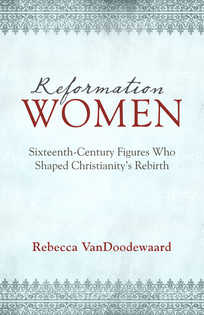“Women are an essential element in church history” (p.ix). VanDoodewaard’s affirmation of this oft-neglected aspect of the history of Christianity provides more than adequate justification for this updated version of James I. Good’s Famous Women of the Reformed Church (1901). VanDoodewaard has “revised, expanded, and corrected” Good’s work and added an historical introduction that sets the various biographies in their larger context. There are twelve biographical sketches in the book, nearly all of which are unfamiliar names to a contemporary readership. Making the lives of these women known again is a real plus of this work and one of VanDoodewaard’s main aims in writing it (p.xi). For instance, I was completely unaware of the witness and stories of Charlotte Arbaleste (1548–1606) and Charlotte de Bourbon (c.1546–1582), both of whom I found to be tremendous examples of courage and piety.
Most of the figures are either German-speaking or Francophone, though there is one English woman, Katherine Willoughby (1519/20–1580), the patron of the Reformation martyr Hugh Latimer, and one Italian, Olympia Morata (c.1526–1555). VanDoodewaard rightly concludes regarding the lives of all these women: “Real femininity is strength—a uniquely feminine strength that is tough and ladylike” (p.xiii).
It is important to recognize that the twelve chapters are “tasters,” wetting the reader’s appetite for more extensive material about the figures studied. Reading about Katherine Willoughby, for example, I noted that the final twenty years of her life are covered in a brief few lines (p.88–89). Much more could have been said. It was during this time, for example, that she financially supported England’s leading Protestant publisher John Day (c.1522–1584), who has been called “the master printer of the English Reformation.”But VanDoodewaard has given us a fabulous introduction to a group of remarkable women. A bibliography at the close of the volume is extremely helpful in providing resources for further study. VanDoodewaard has also added a helpful timeline and three family trees.
One small quibble needs mentioning because it is a common misunderstanding. In her “Introduction,” VanDoodewaard notes that Elizabeth I ended the brutal persecution of her half-sister Mary I and had a “long reign of religious moderation” (p.xix). Actually, by the close of her reign in 1603, Elizabeth had executed nearly 200 Roman Catholics—123 priests and nearly 60 lay people—which she justified on the basis of their politics rather than their religion.
This is an excellent volume for this year of remembering the Reformation and one I am happy to highly recommend to be widely read.
Michael A.G. Haykin
Dundas, ON
April 18, 2017
